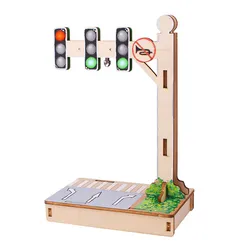Educational Toys – A Parent's Guide to Fun Learning
2024-10-28
What are educational toys, and how are they different from regular toys?
Educational toys are designed to help children develop cognitive, physical, social, and emotional skills. Unlike regular toys, they have a structured learning goal—such as improving math abilities, language skills, or fine motor coordination—while still being fun and engaging.
What are the benefits of educational toys?
Educational toys offer several advantages, including:
Encouraging creativity and imagination: Toys like building blocks inspire open-ended play.
Improving motor skills: Puzzles and manipulatives enhance hand-eye coordination.
Promoting problem-solving abilities: Games with challenges boost critical thinking.
Fostering social skills: Board games and role-playing toys encourage teamwork.
Introducing STEM concepts: Toys focused on science, technology, engineering, and math (STEM) prepare children for future learning.
What are some examples of educational toys?
Popular types include:
Building blocks and construction sets: Develop spatial awareness and fine motor skills.
STEM kits: Teach coding, robotics, and basic science concepts.
Alphabet and number toys: Help children learn letters and counting.
Musical instruments: Enhance auditory skills and creativity.
Puzzles: Improve logical thinking and problem-solving abilities.
How do I choose the right educational toys for my child?
Keep these points in mind:
1. Age appropriateness: Ensure the toy matches your child’s developmental stage.
2. Interests: Select toys that align with your child’s interests to keep them engaged.
3. Skill development: Look for toys that target specific skills (e.g., memory, motor skills).
4. Quality and safety: Choose durable, non-toxic toys with no sharp edges or small parts.
5. Multifunctionality: Toys that can be used in different ways encourage long-term play.
How can I make the most of educational toys?
Play together: Engage with your child during playtime to enhance the learning experience.
Set goals: Use toys to teach specific skills, like reading a certain number of words or solving a puzzle.
Rotate toys: Swap out toys regularly to keep playtime exciting.
Encourage storytelling: Use dolls or action figures to build narratives and boost creativity.
Incorporate real-world activities: Apply what your child learns through toys to everyday experiences (e.g., using a toy cash register to practice counting money).
How Educational Toys Support Different Types of Learning
What learning areas do educational toys target?
Educational toys support a wide range of developmental areas, such as:
Cognitive skills: Problem-solving, memory, and logical thinking.
Motor skills: Fine and gross motor coordination through physical play.
Language skills: Vocabulary building and early reading through alphabet toys and storytelling games.
Social skills: Cooperation and sharing in group activities.
Emotional development: Role-playing toys help children understand emotions and empathy.



